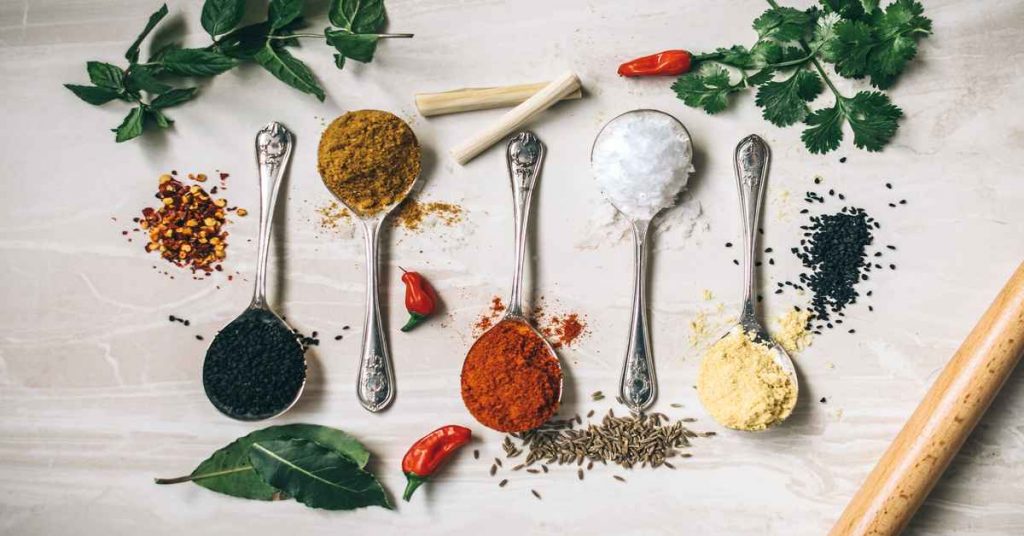We all drop toward various tastes. Some love sweet tastes while others love salty or spicy tastes. While our taste liking might look slightly inappropriate, ayurveda views things differently. In Ayurveda, the taste is the most significant aspect of food as it impacts the core state of balance within us. There are 6 different types of tastes in ayurveda and our diet should include all of them.
Before we get into the 6 types of tastes in Ayurveda, let us understand the basics of taste according to ayurveda.
The Fundamentals Of 6 Tastes
Ayurveda says it is extremely essential to taste and experience the foods we eat, the herbs we use, and our lives completely. Ayurveda views taste or rasas as an enormously influential tool that determines how we experience our food and the complete flavor of our life. There are 6 tastes or rasas in ayurveda.
6 rasa in ayurveda are the essence of life and impact almost all aspects of our existence ranging from our structure and physiology to our entire state of mind and mindfulness. Rasa Ayurveda is given a much more profound significance than we are adapted to. Six types of tastes in Ayurveda are considered vital in defining the impact of various foods, therapeutic herbs, spices, and experiences on our minds, body, and spirit.
Each of the six tastes in appropriate quantity contributes to your core balance and imbalance. You must have noticed how different types of foods influence different people. Rasa Ayurveda is among the few approaches to nutrition that explore why diverse foods impact people in different ways. It offers an approach to alter your diet to attain the best health.
Ayurveda rasa includes a single taste or a combination of various tastes with maddening or mollifying effects on each of our doshas which are Vata, Pitta, and Kapha.
1. Vata
- What to emphasize: Salty, sour, and sweet
- What to take in moderation: Bitter, pungent, and astringent
2. Pitta
- What to emphasize: Bitter, sweet, and astringent
- What to take in moderation: Salty, sour, and pungent
3. Kapha
- What to emphasize: Bitter, pungent, and astringent
- What to take in moderation: Sweet, salty, and sour
You will also ❤️ these:
10 Popular Books On Ayurveda Of All Time
Best Ayurvedic Medicine for Anxiety to Live a Peaceful Life
6 Types Of Tastes In Ayurveda And Their Elements
6 types of tastes in ayurveda include sweet, salty, sour, bitter, pungent, and astringent. Each of the 6 rasas in ayurveda has a distinct effect on people. Too little or too much of these six tastes may contribute to poor health. The appropriate amount of ayurveda rasa helps maintain balanced nutrition, good health and feel completely satisfied.
Let us explore the 6 tastes with examples:
Sweet (Madhura)
Sweet taste comprises water and earth. Sweet taste decreases Vata, and Pitta and increases Kapha. Among the 6 types of tastes in ayurveda, the sweet taste is believed to be the most nourishing and grounding. When consumed in moderation, it encourages strength, longevity, and healthy tissues and body fluids.
Major sources of sweet taste are wheat, dairy, rice, cereals, pumpkins, dates, licorice root, and maple syrup.
Sour (Amla)
The sour taste comprises fire and water. It decreases Vata and Increases Pitta and Kapha. Sour rasa in ayurveda is known to awaken thoughts and emotions, stimulate saliva production and improve appetite, digestion, and elimination. Excess consumption of sour foods can lead to aggression so it should be consumed in moderate amounts.
The most common sour foods are wine, fermented food, lemon, vinegar, tamarind, and pickles.
Salty (Lavana)
The salty taste consists of fire and earth. It decreases Vata and increases Pitta and Kapha. Out of 6 types of tastes in ayurveda, salty taste is the best for Vata due to its hydrating and grounding nature. This rasa enhances the taste of foods, helps electrolyte balance, stimulates digestion, cleanses tissues, and improves mineral absorption in the body. Excessive intake of salty rasa can negatively impact your skin and blood.
Some examples of foods with salty rasas in ayurveda are sea vegetables, black olives, sea salt, tamari, rock salt, Himalayan salt, seaweed, etc.
Pungent (Katu)
Pungent rasa in ayurveda comprises air and fire. It increases Vata, and Pitta and decreases Kapha. Among the different types of tastes in ayurveda, pungent rasa is the hottest. It excites digestion, clears sinuses, improves appetite, heightens senses, and promotes blood circulation. Pungent foods help you think clearly and comprehend complicated matters effortlessly. A pungent taste is best eaten with salty, sweet, or sour foods.
Some examples of pungent-tasting foods are hot spices, mustard, garlic, onions, ginger, hot peppers, etc.
Bitter (Tikta)
Bitter taste comprises space and air. This ayurveda rasa increases Vata and Decreases Pitta and Kapha. Out of the 6 types of tastes in Ayurveda, bitter is considered the coolest and lightest. It is extremely detoxifying and can help eliminate waste stuff from the body due to its remarkable properties. Bitter foods aid mental purification by removing scorching emotions.
Major examples of bitter taste include raw green vegetables, most herbal teas, black tea, green tea, turmeric, etc.
Astringent (Kashaya)
Astringent rasa in ayurveda comprises earth and air. It is cool, dry, and strong that increases Vata and Decreases Pitta and Kapha. Among the different types of tastes in Ayurveda, Pitta advantages most from astringent rasa. Just like the bitter taste, astringent also helps strengthen you and improve mental purity. Astringent foods may cause gas when taken in excess amounts.
Some common examples of astringent-tasting foods are green grapes, unripe bananas, green beans, cranberries, okra, and alfalfa sprouts.
Frequently Asked Questions
Question 1. What Rasa increases Vata the most?
Vata is comprised of air and ether elements. Vata is significantly balanced by salty, sour, and sweet tastes. Among the various types of tastes in ayurveda, Vata is intensified by astringent, bitter, and pungent tastes.
Question 2. What is rasa and anurasa?
Rasa is a Sanskrit word that means taste. Rasa has many potent meanings including juice, essence, experience, enthusiasm, and plasma but in Ayurveda, rasa is a word for taste. Anurasa means going with the flow, flowing with grace, and following your heart.
Question 3. Which taste do you need to increase to heighten Pitta?
Salty, sour, and pungent rasas in ayurveda heighten Pitta by boosting its hot property. However, sweet, astringent, and bitter tastes decrease Pitta by offering opposite properties to those of Pitta.






